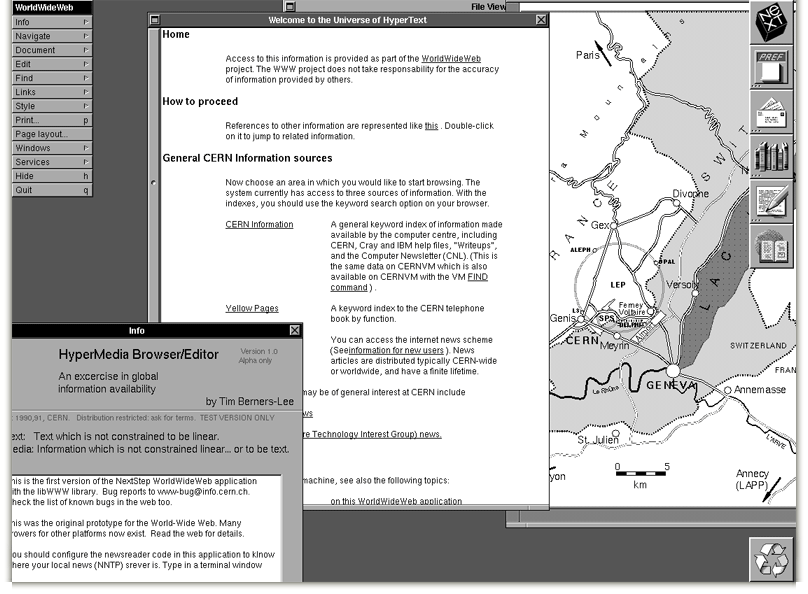I’m reading Tim Berners-Lee’s book Weaving the Web
For a long time I never really got the distinction between the “Internet” and the “world wide web.” To me they were the same thing, and they might be for many other folks too. But in hindsight this is just a testament to how successful Berners-Lee’s creation is.
Most people’s perceptible interaction with the Internet is through a browser where they visit a website. The Internet is simply a system of interconnected computer networks that use the TCP and IP protocols to communicate. The web, on the other hand, is built on top of TCP/IP with hypertext transfer protocol (HTTP), an application layer protocol, that allows the transfer of various forms of media.
HTTP is one of the three defining building blocks that defines the web. The other two are uniform resource locator (URL) and hyptertext markup language (HTML). HTTP is the way computers communicate webpages, URLs tell computers where to find each page/resource, and HTML is the words they speak and render.
Berners-Lee’s original motivation for the web came about when he was working at CERN as a fellow. He was frustrated by CERN’s disparate computer systems that weren’t compatible with each other and stood as obstacles to the scientists who wanted to collaborate on their research by sharing documents and data. So Berners-Lee, over the course of many years, thought of a common standard through which computers could share their files.
This led to the design of URIs, a single string of text that could specify the location of any piece of media no matter where it was in the world as long as it was exposed to the internet. This is quite a remarkabe innovation. URIs are like street addresses for a world that didn’t have them before.
It was challenge to get widespread adoption of this new standard, especially as competing standards were also out there. But I’m astounded by ubiquitous it is nowadays. And it’s only been 22 years.
Here’s a screenshot of the first web browser. It ran on a NeXT computer.
